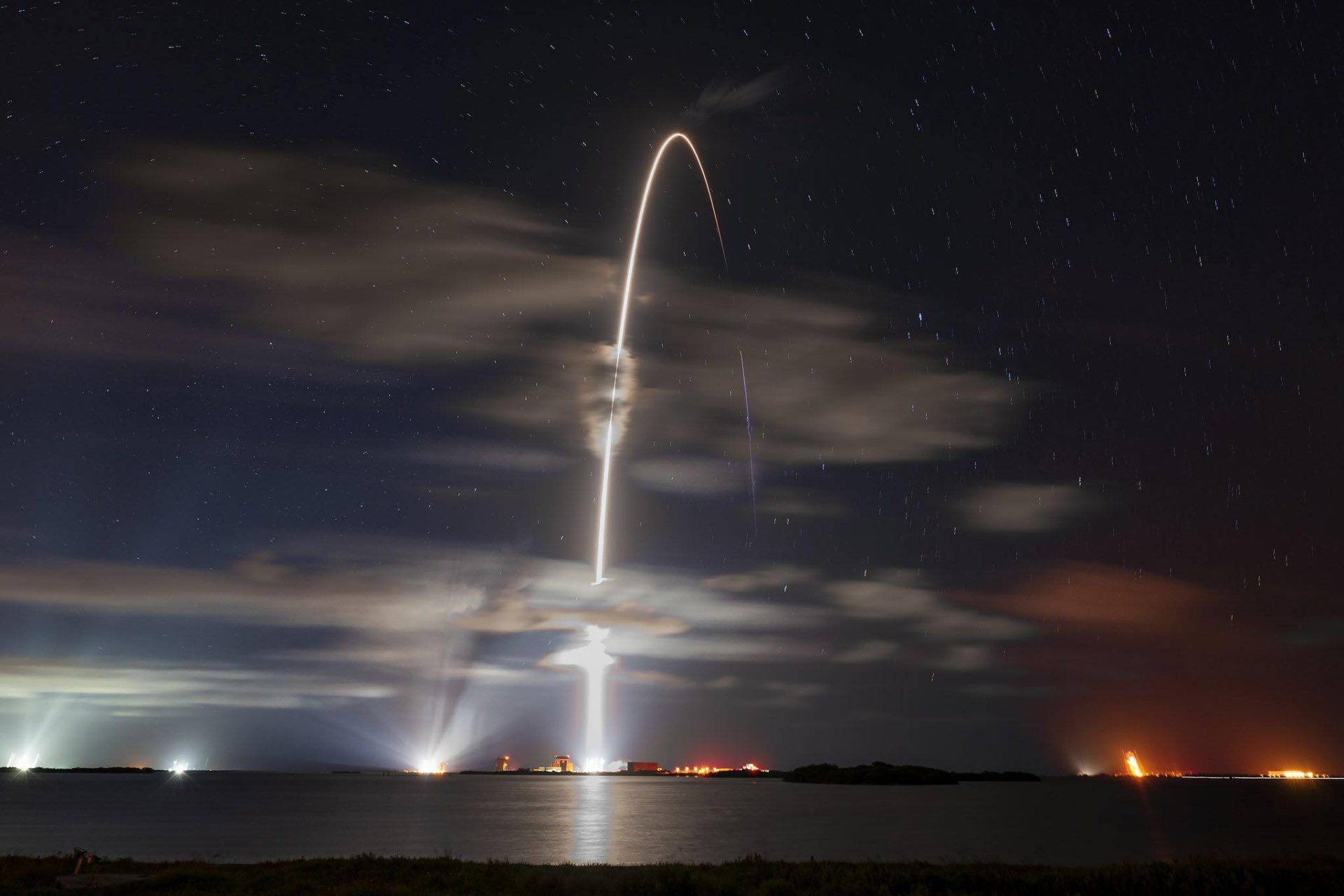
SpaceX’s second mission of June and its shortest-ever turnaround between reflights of payload fairing halves was successfully completed late Tuesday, as one of its most seasoned Falcon 9 boosters roared uphill laden with additional Starlink internet communications satellites. Veteran B1067—making her fifth launch of the year and the 20th of her career since June 2021—rose from storied Space Launch Complex (SLC)-40 at Florida’s Cape Canaveral Space Force Station, at 10:16 p.m. EDT, as attention now turns to Wednesday’s scheduled midday liftoff of a United Launch Alliance (ULA) Atlas V from neighboring SLC-41 and the long-awaited Crew Flight Test (CFT) of Boeing’s CST-100 Starliner.
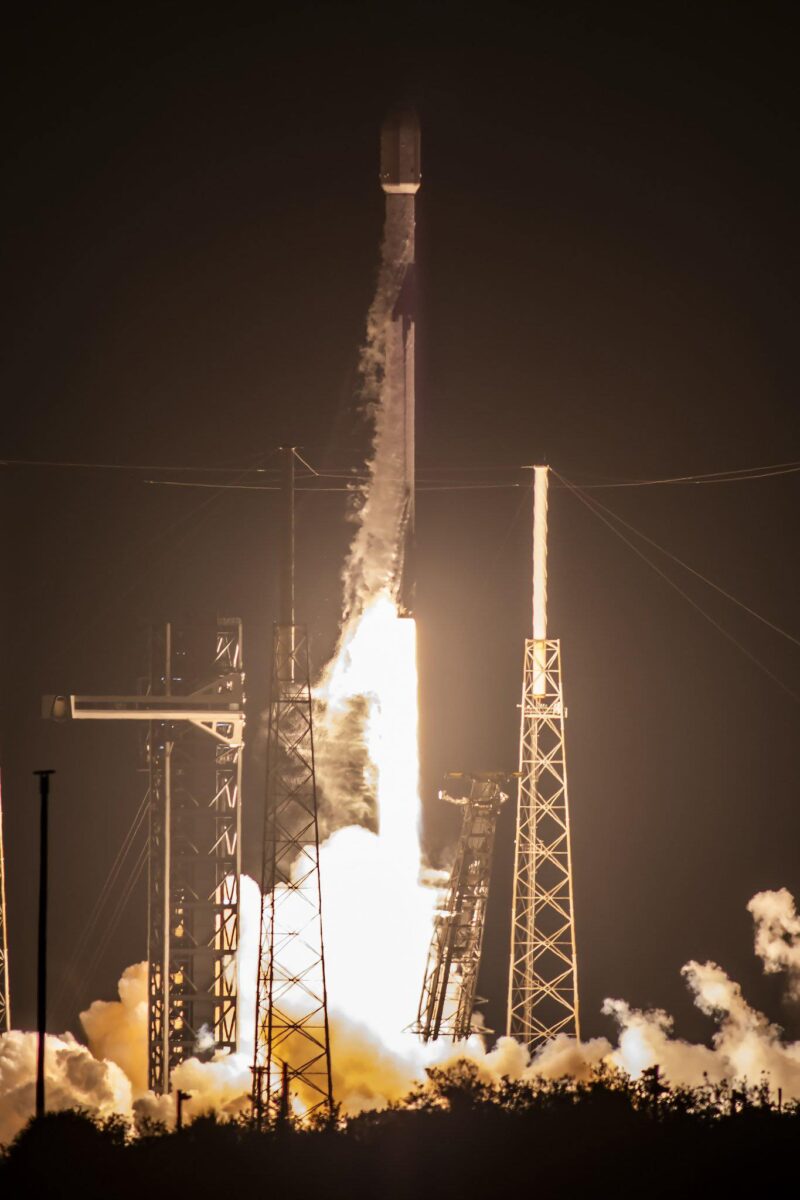

With last night’s launch, B1067 now stands as the fourth Falcon 9 core to pass a 20th mission and, discounting her sister B1060 which was intentionally expended following her own 20th flight in April, now sits in third place on the life-leader’s board as one of SpaceX’s extreme veterans. First flown in June 2021 and most recently early in May, B1067 has now lifted 11 batches of almost 400 Starlinks into orbit, as well as four large geostationary communications satellites and two pairs of crewed and uncrewed missions to the International Space Station (ISS).
She first saw service almost three years ago to launch the CRS-22 Cargo Dragon for a month-long stay at the sprawling orbital complex. Next, she delivered eight astronauts from the United States, Germany and Italy to the sprawling orbital complex on Crew-3 in November 2021 and Crew-4 in April 2022, followed by the CRS-25 Cargo Dragon to the station the following summer.
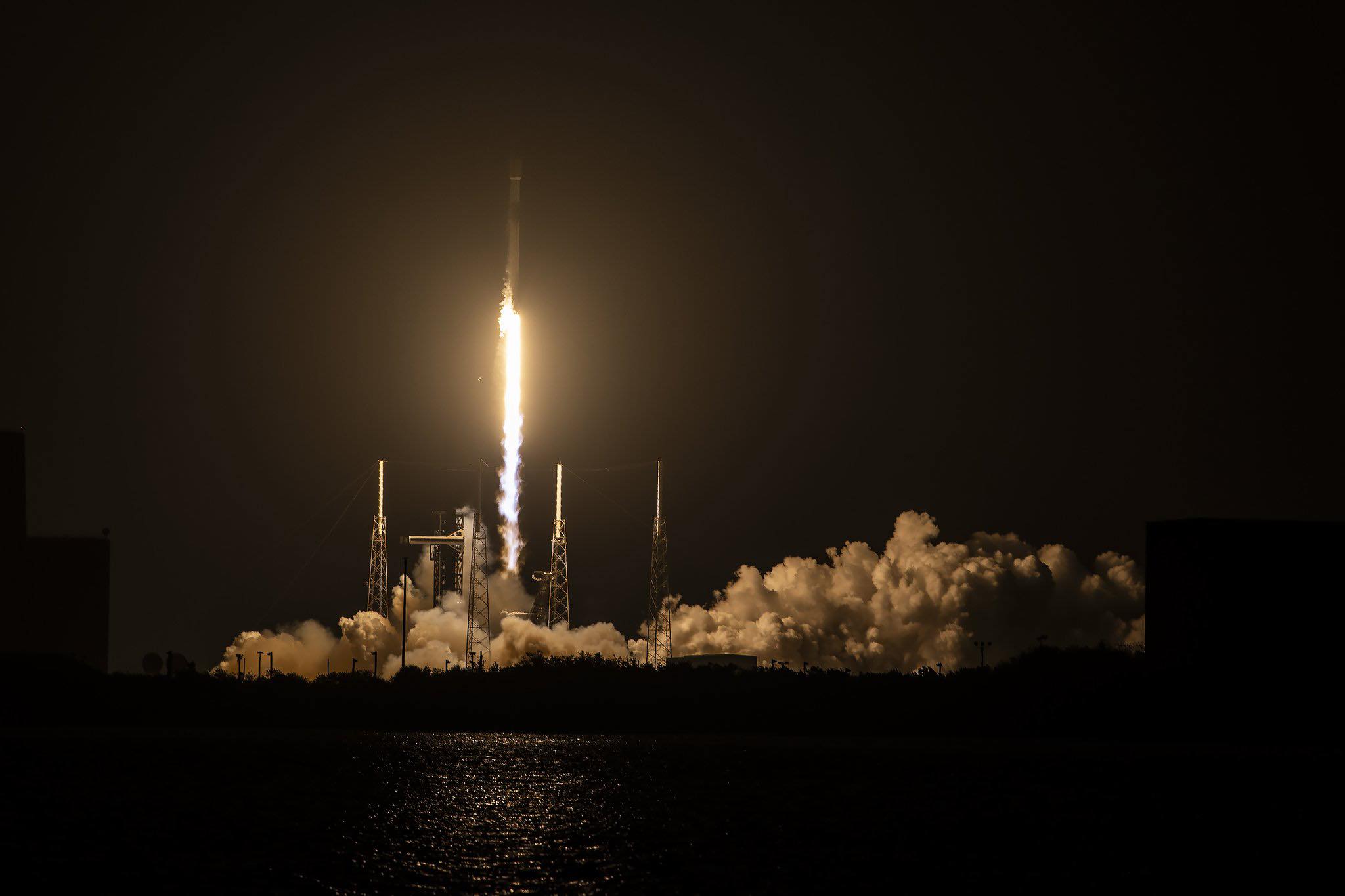

Added to this impressive list, B1067 also lifted her first geostationary communications satellite for Türkiye in December 2021—which helped set a new record (now broken) between pairs of Falcon 9 launches at less than 16 hours—and a pair of O3b mPOWER broadband satellites in December 2022. Other payloads included the Hotbird 13G communications satellite in November 2021 and the Satria Very High Throughput Satellite (VHTS) for Indonesia’s Pasifik Satelit Nusantara (PSN) in June 2022.
Notably, her Hotbird 13G launch in November 2022 marked the first time that SpaceX achieved 50 Falcon 9 missions in a single calendar year. And in January of 2023, one of her Starlink payloads tipped the scales at 38,400 pounds (17,400 kilograms) to become the heaviest Falcon 9 payload ever orbited at that time.
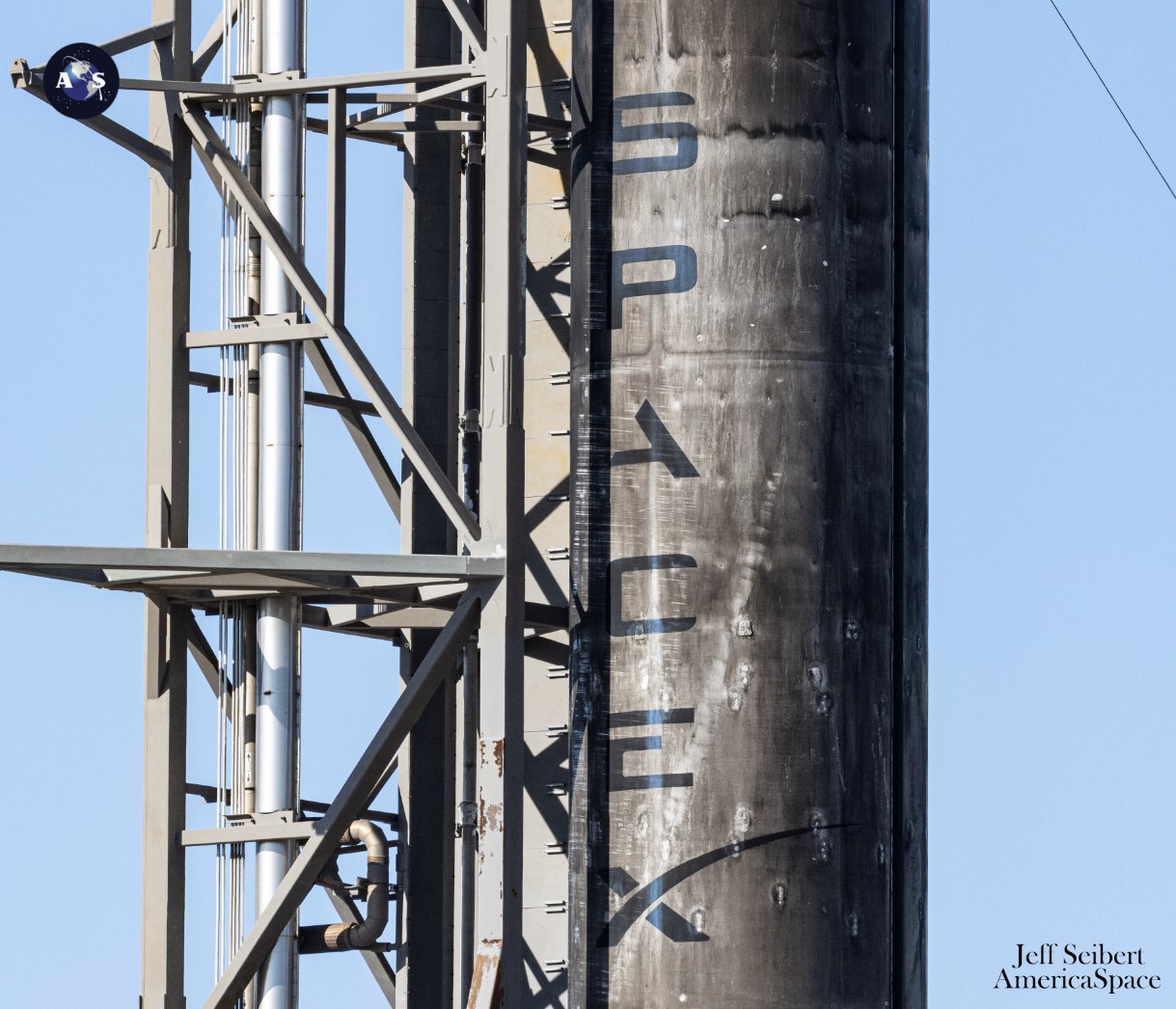

With weather conditions pegged at 95-percent-favorable, SpaceX targeted a pair of T-0 points for B1067’s latest mission: a first at 10:16 p.m. EDT Tuesday and a second at 7:50 p.m. EDT Wednesday. And without further ado, this extreme veteran of the fleet speared for space precisely on time on the opening launch attempt, the dazzling glare of her nine Merlin 1D+ engines and a thrust of close to 1.7 million pounds (770,000 kilograms) pushing her latest mission aloft.
Last night’s flight marked the 41st batch of Starlinks launched so far in 2024 and raises the total number of these small, flat-packed internet communications satellites flown since January to more than 900. All told, well north of 6,500 Starlinks have now been delivered successfully to orbit since May 2019.
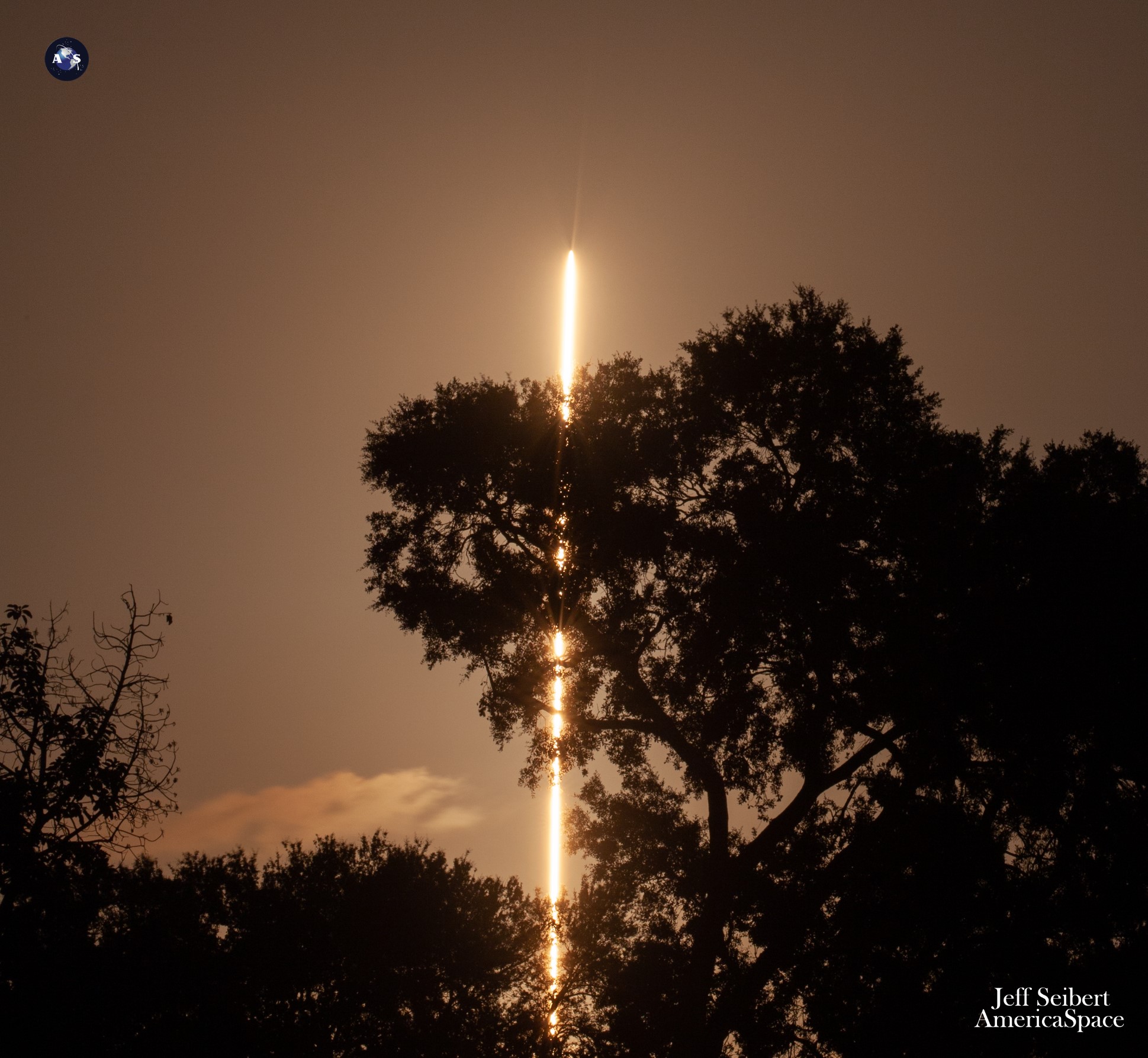

As a network, Starlink enables high-speed and low-latency internet provision to over 70 sovereign nations and international markets in North and South America, Europe, Asia, Oceania and Africa. In the month of May alone, Starlink connectivity became available in Uruguay, Indonesia and Fiji, bringing to 78 the total number of sovereign nations or regions to be in full receipt of coverage.
The downsized V2 Mini satellites, first flown in February of last year, boast three to four times greater “usable” bandwidth than earlier Starlink iterations. “V2 Minis include key technologies—such as more powerful phased-array antennas and the use of E-Band for backhaul—which will allow Starlink to provide 4x more capacity per satellite than earlier iterations,” SpaceX explained. “Among other enhancements, V2 Minis are equipped with new argon Hall thrusters for on-orbit maneuvering.”
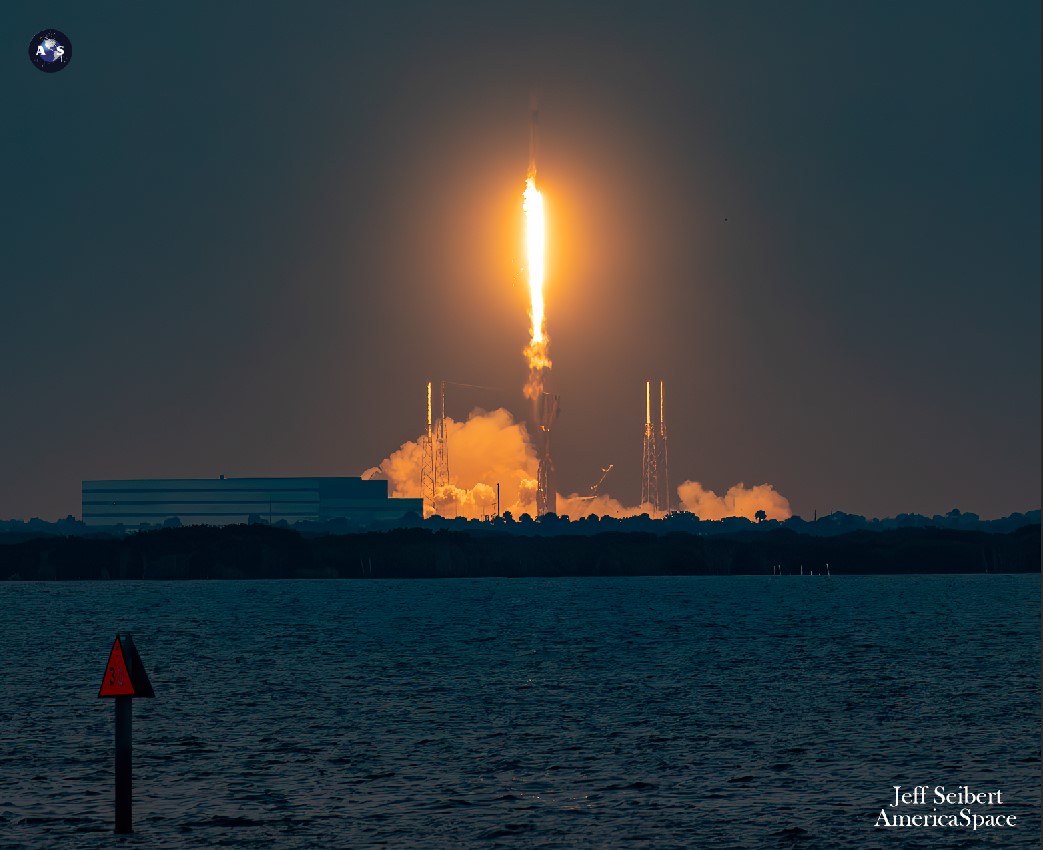

Florida-based intercity operator Brightline adopted Starlink on its trains in 2023, the first passenger rail service in the world to do so. Additionally, El Salvador’s Ministry of Education has begun integrating Starlink capability into its schools to help close the digital divide between urban and remote rural communities and 50 Rwandan schools are now connected via Starlink’s high-speed internet service. As of May, Starlink reportedly had about three million registered subscribers or customers worldwide.
Eight minutes after last night’s mission, B1067 pirouetted gracefully homeward and alighted on the deck of the East Coast-based Autonomous Spaceport Drone Ship (ASDS), “Just Read the Instructions”, becoming the second SpaceX booster to complete 20 drone ship landings. This also marked the shortest turnaround of reusable Falcon 9 payload fairing halves, which had previously seen use on a mission just two weeks ago.
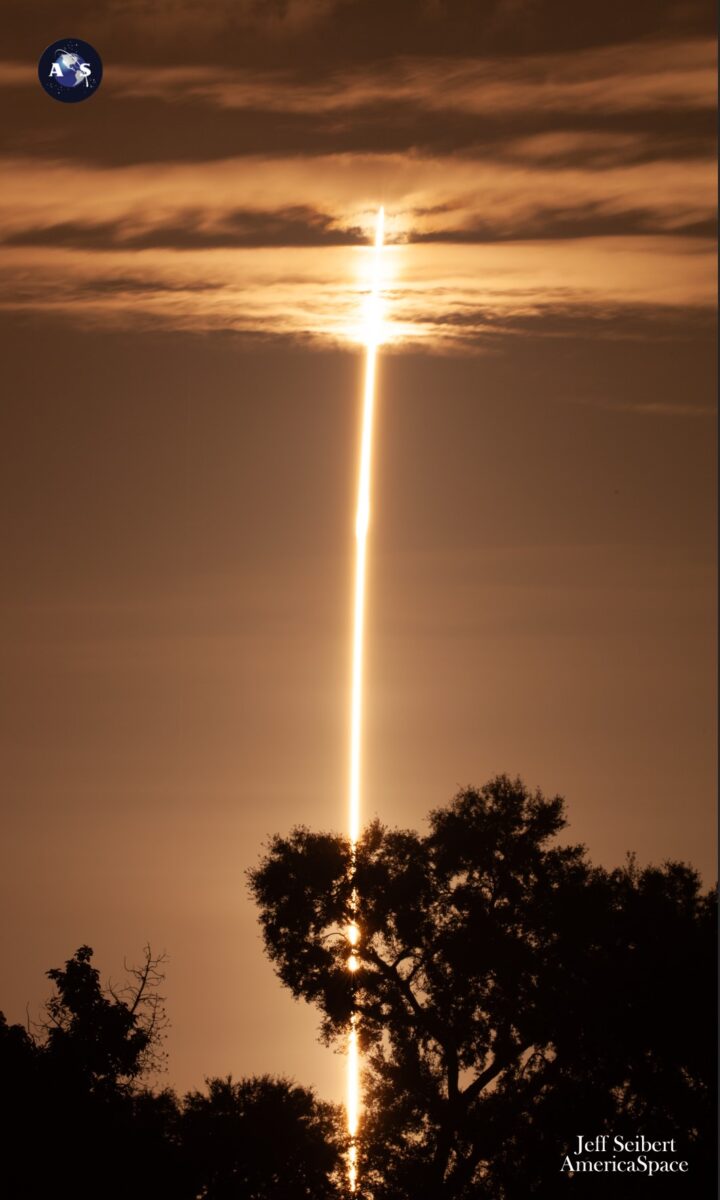

“The passive fairing half for this mission recently supported a @Starlink mission on May 22, less than two weeks ago,” SpaceX tweeted after last night’s launch, “marking our fastest launch-to-launch turnaround for fairing refurbishment and reuse.”
Reuse of fairings has been a central tenet of SpaceX’s reusability philosophy, with the first fairing successfully retrieved intact from the ocean in March 2017 and fairings routinely recovered for additional missions since mid-2019. Fairing halves were first reflown, retrieved and flown again in November 2019, a process since repeated more than 300 times. In April of 2023, a Falcon Heavy flew with reused fairing halves for the first time and last February a Falcon 9 booster reflew one fairing half for a record-setting 15th time.


With two Falcon 9 missions of June complete, attention now turns to the Cape’s SLC-41, where a 172-foot-tall (52.4-meter) Atlas V with Boeing’s CST-100 Starliner spacecraft at its tip is entering the final hours of countdown towards a planned 10:52:15 a.m. EDT launch on Wednesday. As previously noted by AmericaSpace, the long-awaited launch has twice met with delay: on 6 May it was scrubbed less than two hours prior to liftoff, due to a faulty oxygen relief valve on the Atlas V’s Dual-Engine Centaur (DEC) upper stage, and last Saturday a Ground Support Equipment (GSE) issue put paid to a second attempt at less than four minutes before the scheduled T-0.
Hopes to enter a 24-hour recycle and launch as soon as Sunday ultimately came to nought and teams elected to stand down until Wednesday to replace and retest equipment at the pad. Countdown operations got underway at 11:32:15 p.m. EDT Tuesday, exactly 11 hours prior to launch, at the T-6 hour and 20-minute point.
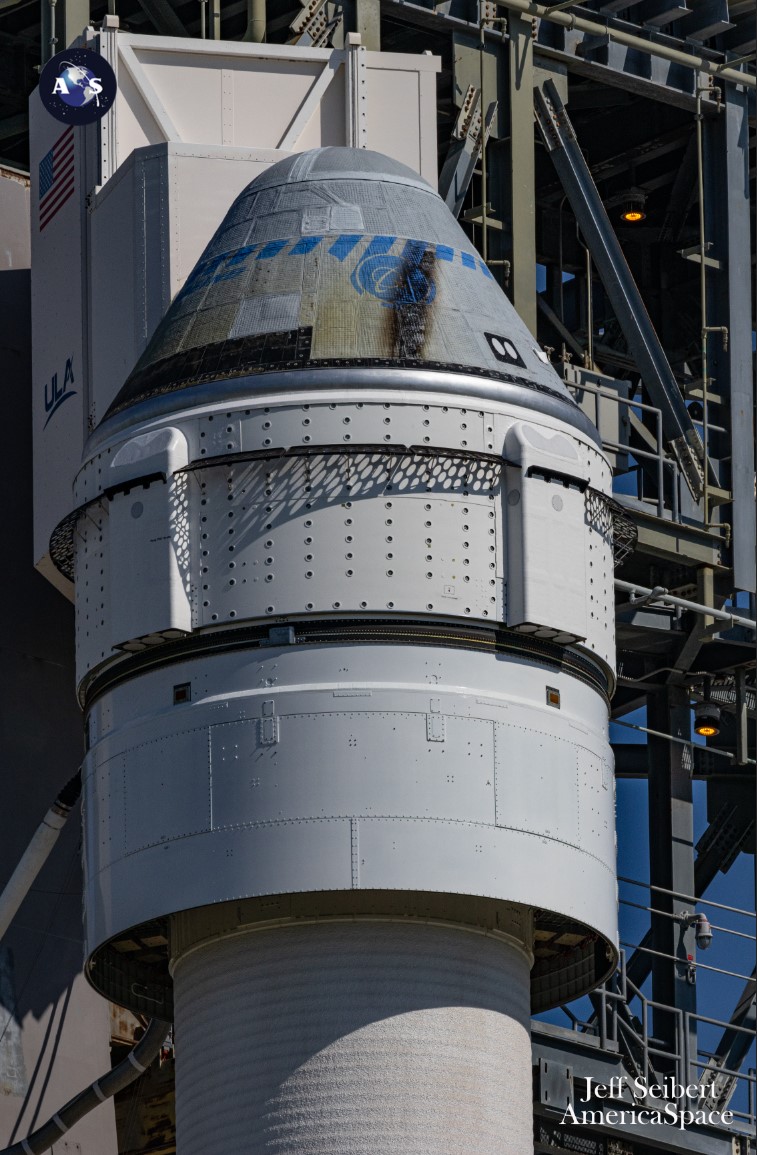

That expansive countdown includes a pair of built-in holds: the first lasting an hour at T-2 hours, to facilitate a shift handover prior to fueling the Atlas V with cryogenic liquid oxygen and hydrogen propellants, and a second lasting four hours just after fueling at T-4 minutes when the rocket is in a “quiescent” state. This will enable ULA and Boeing teams to access the Starliner spacecraft and assist Crew Flight Test (CFT) Commander Barry “Butch” Wilmore and Pilot Suni Williams aboard.
Wilmore and Williams will complete the first all-up flight test of Starliner with astronauts aboard. They will spend at least eight “docked” days aboard the ISS, working alongside the incumbent Expedition 71 crew on a wide range of flight test objectives, before returning to a parachute-and-airbag-aided landing in the southwestern United States after a mission of approximately ten days.
FOLLOW AmericaSpace on Facebook and X!


